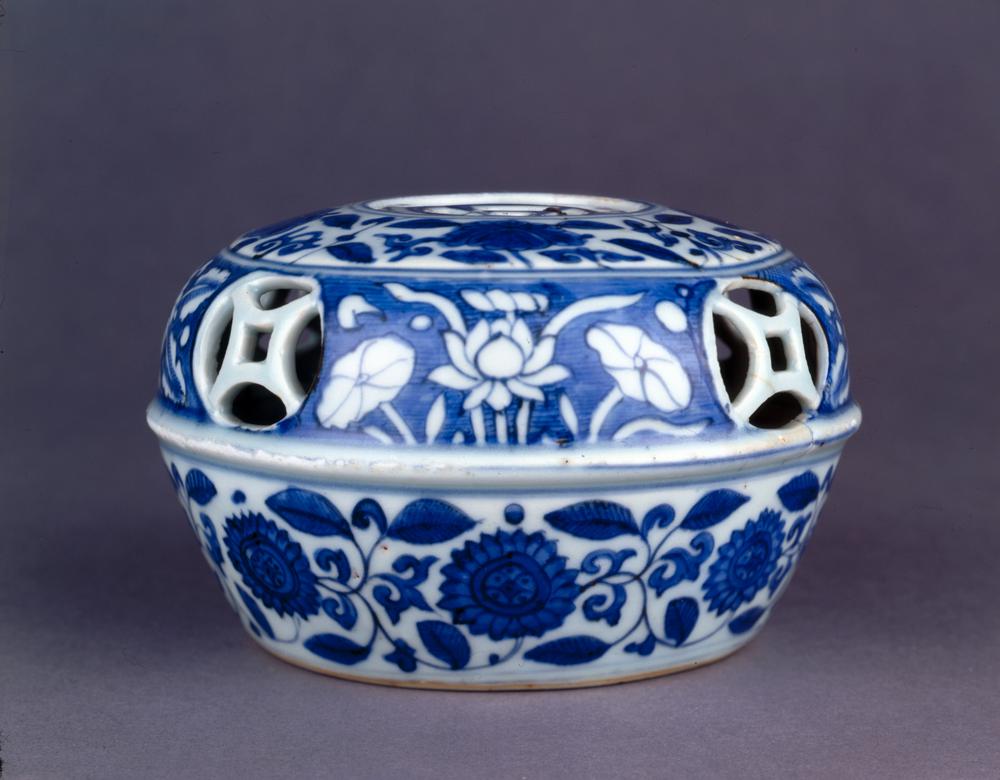Period:Northern Song dynasty Production date:983
Materials:silk, 絲綢 (Chinese),
Technique:painted
Subjects:bodhisattva lotus throne 菩薩 (Chinese) 兒童 (Chinese) 供養人 (Chinese) 蓮花寶座 (Chinese) child
Dimensions:Height: 99 centimetres Width: 59.50 centimetres
Description:
Avalokiteśvara seated on a lotus seat with the Good and Bad Boys. In the lower register are two rows of male, female and child donors, with central inscription and identifying catouches. Ink and colour on silk.
IMG
![图片[1]-painting; 繪畫(Chinese) BM-1919-0101-0.54-China Archive](https://chinaarchive.net/Northern Song dynasty/Paintings/mid_RFC663_Top.jpg)
![图片[2]-painting; 繪畫(Chinese) BM-1919-0101-0.54-China Archive](https://chinaarchive.net/Northern Song dynasty/Paintings/mid_RFC663_Bot.jpg)
![图片[3]-painting; 繪畫(Chinese) BM-1919-0101-0.54-China Archive](https://chinaarchive.net/Northern Song dynasty/Paintings/mid_RFC663_Whole.jpg)
Comments:EnglishFrom Whitfield 1983:Apart from its value as a dated work (Fig. 36), the painting is remarkable since it has suffered few changes from its original appearance. It has been backed with modern Japanese paper, and a stave and roller have been added, but it retains its original multi-coloured border, sewn on after the painting was completed and overlapping it for about a centimetre around the edges.The colouring, the prominence of the donors and the arrangement of the aureole and nimbus all link this painting closely with the preceding one (Pl. 26). According to the cartouche in the upper left corner and judging by the “parent” figure of Amitabha in the headdress, the central figure is Avalokitesvara. This ever-popular Bodhisattva has here, however, assumed some features more properly associated with Ksitigarbha, who, as we have seen (Pls. 22-24), enjoyed considerable popularity in the tenth century. Thus in his left hand Avalokitesvara is holding the cintamani, while on either side he is accompanied by standing figures of the Good and Bad Boys, each holding a large scroll. These are the spirits who keep records and at regular intervals ascend to make reports that will be used after death when the soul appears before the Ten Kings for judge-ment of its actions during life, and a decision on the sphere in which it will be reborn. ChineseFrom Whitfield 1983:此畫除了是有紀年的作品外,有幾處改變很值得注意。用新的日本紙做裏子,加了新的竹竿和卷軸,使用的各種色布的邊仍以原來的樣子保存下來,畫的四邊各縫進1釐米。 色彩的使用方法、供養人的突出,頭光和身光的結構和配色等,可看出與上一圖(圖26)有密切關連。根據畫面左上角長方形題箋中記錄的像名和寶冠上的化佛,知道中尊是觀世音菩薩。但是,通常人氣很高的觀音,在這裏,使人聯想起曾在圖22~24中,10世紀時深受歡迎的地藏菩薩具有的幾個特徵。那是因觀音左手持火焰寶珠,兩旁跟隨著懷抱很大卷物的善童子和惡童子的原因。這兩個童子的作用,是獲得記錄後在一定時間內作出報告書。死者因生前的行爲,出現在十王面前而受審判時,根據那報告書判斷他將轉生於哪一界。
Materials:silk, 絲綢 (Chinese),
Technique:painted
Subjects:bodhisattva lotus throne 菩薩 (Chinese) 兒童 (Chinese) 供養人 (Chinese) 蓮花寶座 (Chinese) child
Dimensions:Height: 99 centimetres Width: 59.50 centimetres
Description:
Avalokiteśvara seated on a lotus seat with the Good and Bad Boys. In the lower register are two rows of male, female and child donors, with central inscription and identifying catouches. Ink and colour on silk.
IMG
![图片[1]-painting; 繪畫(Chinese) BM-1919-0101-0.54-China Archive](https://chinaarchive.net/Northern Song dynasty/Paintings/mid_RFC663_Top.jpg)
![图片[2]-painting; 繪畫(Chinese) BM-1919-0101-0.54-China Archive](https://chinaarchive.net/Northern Song dynasty/Paintings/mid_RFC663_Bot.jpg)
![图片[3]-painting; 繪畫(Chinese) BM-1919-0101-0.54-China Archive](https://chinaarchive.net/Northern Song dynasty/Paintings/mid_RFC663_Whole.jpg)
Comments:EnglishFrom Whitfield 1983:Apart from its value as a dated work (Fig. 36), the painting is remarkable since it has suffered few changes from its original appearance. It has been backed with modern Japanese paper, and a stave and roller have been added, but it retains its original multi-coloured border, sewn on after the painting was completed and overlapping it for about a centimetre around the edges.The colouring, the prominence of the donors and the arrangement of the aureole and nimbus all link this painting closely with the preceding one (Pl. 26). According to the cartouche in the upper left corner and judging by the “parent” figure of Amitabha in the headdress, the central figure is Avalokitesvara. This ever-popular Bodhisattva has here, however, assumed some features more properly associated with Ksitigarbha, who, as we have seen (Pls. 22-24), enjoyed considerable popularity in the tenth century. Thus in his left hand Avalokitesvara is holding the cintamani, while on either side he is accompanied by standing figures of the Good and Bad Boys, each holding a large scroll. These are the spirits who keep records and at regular intervals ascend to make reports that will be used after death when the soul appears before the Ten Kings for judge-ment of its actions during life, and a decision on the sphere in which it will be reborn. ChineseFrom Whitfield 1983:此畫除了是有紀年的作品外,有幾處改變很值得注意。用新的日本紙做裏子,加了新的竹竿和卷軸,使用的各種色布的邊仍以原來的樣子保存下來,畫的四邊各縫進1釐米。 色彩的使用方法、供養人的突出,頭光和身光的結構和配色等,可看出與上一圖(圖26)有密切關連。根據畫面左上角長方形題箋中記錄的像名和寶冠上的化佛,知道中尊是觀世音菩薩。但是,通常人氣很高的觀音,在這裏,使人聯想起曾在圖22~24中,10世紀時深受歡迎的地藏菩薩具有的幾個特徵。那是因觀音左手持火焰寶珠,兩旁跟隨著懷抱很大卷物的善童子和惡童子的原因。這兩個童子的作用,是獲得記錄後在一定時間內作出報告書。死者因生前的行爲,出現在十王面前而受審判時,根據那報告書判斷他將轉生於哪一界。
© Copyright
The copyright of the article belongs to the author, please keep the original link for reprinting.
THE END
![[Qing Dynasty] British female painter—Elizabeth Keith, using woodblock prints to record China from the late Qing Dynasty to the early Republic of China—1915-China Archive](https://chinaarchive.net/wp-content/uploads/2022/11/image-191x300.png)




